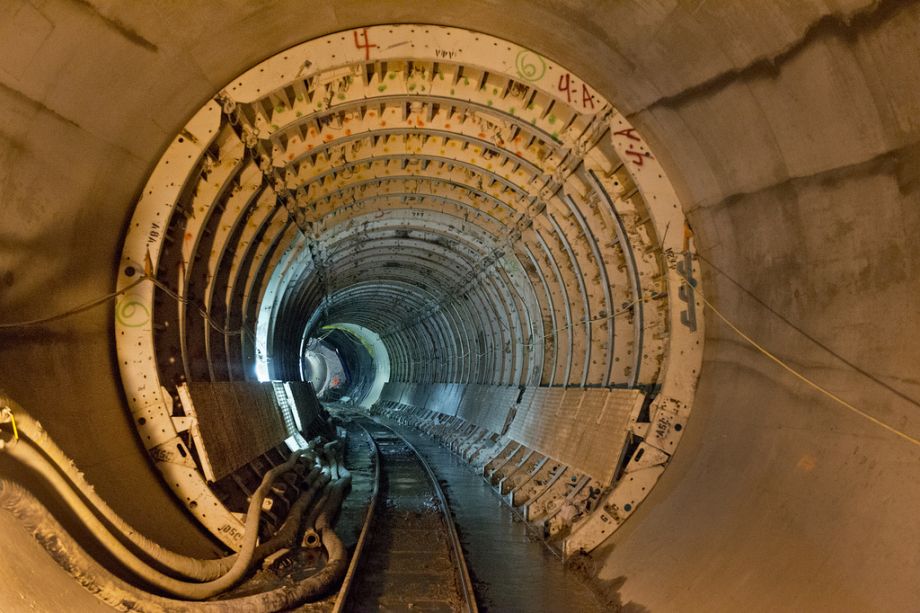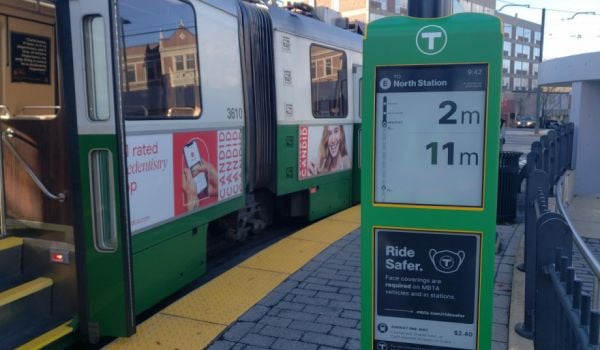Sometime this week, the New York City Council is expected to vote on a proposed rezoning of Midtown East, Mayor Michael Bloomberg’s last try at shaping the city. A refusal by the Council to acquiesce to the plan, which would allow a few tall towers to rise on the swanky-but-aging east side of Midtown Manhattan, would have been unthinkable earlier in the mayor’s 12 years in power. Now it seems very possible, even likely.
There are many concerns, including those of design and taste (which are above my paygrade) and whether the city will get a good fiscal deal out of the plan (which I’ll address tomorrow). But one that nearly everyone mentions is the issue of transit. “Adding thousands of commuters who work in giant new office buildings without upgrading the surrounding streets and subways,” New York Times architecture critic Michael Kimmelman wrote in his take-down of the plan, “will only set the city back.”
Yale School of Architecture dean Robert A.M. Stern wrote in the same paper that when he comes back to the city after commuting to New Haven, “I can hardly make my way to the stairways and escalators that lead to the Lexington Avenue subway platforms.”
There’s no denying that the east side of Manhattan is overcrowded, as elevated lines that once ran above Second and Third avenues and were torn down in the 1940s and ’50s have yet to be replaced with the Second Avenue subway. But these criticisms ignore the more than $10 billion now going toward infrastructure for Manhattan’s east side — extra capacity that will far surpass the number of new workers expected in the shiny new office towers. They may not replace the old els, but the projects coming to Midtown East will more than meet the new demand for transit caused by the rezoning.
According to the Department of City Planning, the rezoning is realistically expected to yield 3.8 million square feet, net, of new office space — enough room for, the department estimates, 15,000 more office workers. Contrary to some press coverage, the rezoning will actually be relatively small. For comparison’s sake, around 25 million square feet of new offices alone, with millions more in housing and hotels, are zoned to rise at Hudson Yards.
Meanwhile, there is an enormous amount of new transit capacity coming to Midtown East, many times that provided by the one new Hudson Yards station on the 7 train.
One of the most impactful projects for the neighborhood, the Second Avenue subway, isn’t even located within its borders. The Upper East Side segment, set to open in 2016, will become an extension of the Q train, taking riders directly from the Upper East Side across town to the west side, down to Times Square and then further down Broadway and into Brooklyn. With an estimated 200,000 weekday riders, the $4.5 billion project will divert many more commuters from the most crowded segment of the Lexington Avenue line than the rezoning will add.
Next up is East Side Access, the Long Island Rail Road’s $8.4 billion effort to bring its trains to a cavernous terminal of its own near Grand Central, estimated to host 162,000 rides each weekday and set to open in 2019. Its projected ridership alone dwarfs the impact of any new buildings in the area. Most commuters heading to the new LIRR terminal will be diverted from Penn Station, from which many of them rode the E train to the east side, meaning that space will free up on that service as well.
Additionally, the rezoning involves developers paying for nearly $500 million in passenger circulation improvements to Grand Central Terminal and the neighborhood’s subway stations. This means more staircases, escalators, mezzanine space and passageways at Grand Central and the associated subway complex, the E and M stations at Fifth Avenue and 53rd Street, and the 6 station at 51st. The money would also go toward building an underground passageway between the subway, the new LIRR terminal and Grand Central’s lower-level platforms and tracks — something the MTA probably should have funded in the first place, but which it likely omitted due to spiraling costs. Without the money provided by the rezoning, East Side Access will open in 2019 without a direct connection to the subway.
Above ground, the rezoning would come with a number of tweaks to sidewalks and streets around the station. Pedestrian areas would be expanded and new pavement laid. The Park Avenue Viaduct, now mostly reserved for cars, would be opened to pedestrians and cyclists year-round. The median on Park Avenue would return to its former glory — widened and opened to pedestrians. A whole new bike lane network would be overlaid atop the district. Seating, trees and planters would appear throughout.
Short of rebuilding the Third Avenue el or finishing the Second Avenue subway, it’s hard to imagine what other transportation improvements critics could want out of the rezoning. There may be other reasons for opposition, but anyone who takes a cursory look at the infrastructure under construction in the neighborhood can’t help but conclude that it’s slated for way more extra capacity than 15,000 office workers could ever fill. Simply put, transit is not an issue.
The Works is made possible with the support of the Surdna Foundation.
Stephen J. Smith is a reporter based in New York. He has written about transportation, infrastructure and real estate for a variety of publications including New York Yimby, where he is currently an editor, Next City, City Lab and the New York Observer.

















